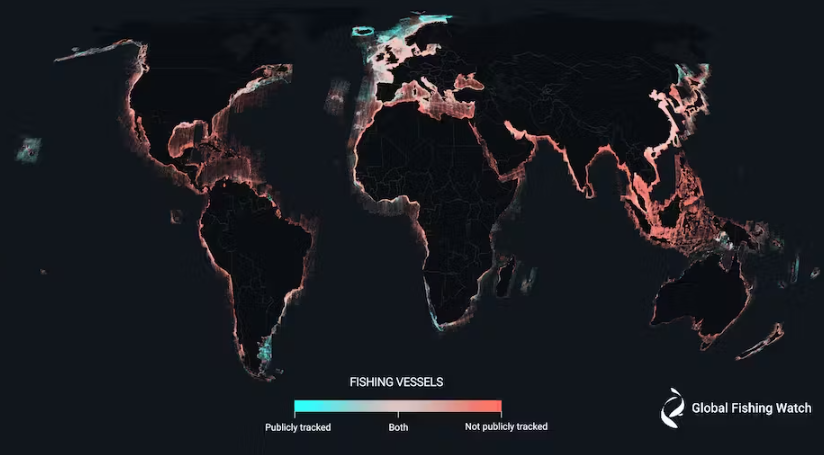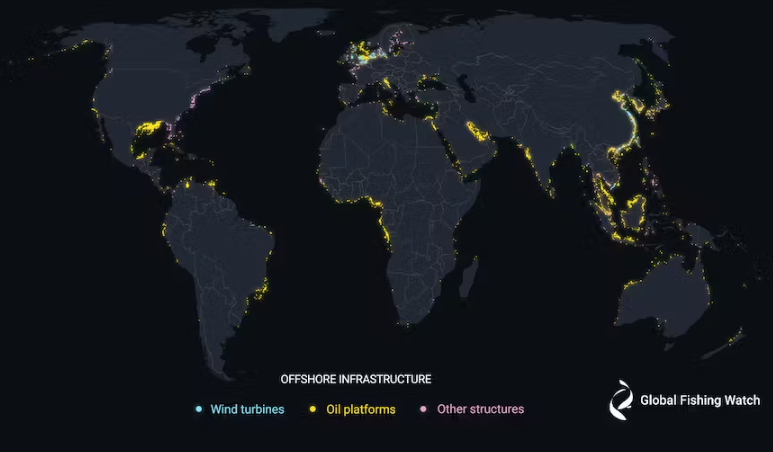 AI
AI
 AI
AI
 AI
AI
Researchers using artificial intelligence algorithms to identify vessels in satellite images of the oceans have concluded that the majority of the world’s industrial fishing boats are not being tracked publicly.
The study, which mapped undisclosed activities at sea for the first time, found that up to three-quarters of large fishing boats and about a quarter of energy and transport ships are “dark vessels” that do not publicly share their location.
The analysis was performed by Global Fishing Watch, and its findings were published in the journal Nature. “We had an idea that we were missing a big chunk of the activity happening in the ocean, but we didn’t know how much. It’s a lot more than we imagined,” Fernando Paolo, a machine learning engineer at GFW, told The Conversation.
The researchers used satellite images, including radar images that can reveal the presence of vessels regardless of cloud cover or darkness, that were taken between 2017 and 2021. The images covered the coastal regions where most large-scale fishing and ocean-based industrial activities occur. As part of the research, several AI algorithms were trained to detect and categorize the various vessels and offshore structures identified within the data.
The enormous global map of vessels was compared with a database of ships that publicly broadcast their location using automatic identification systems or AIS devices that automatically broadcast their identity, position, course and speed. The researchers found that up to 75% of vessels were not using their AIS systems. Such avoidance is not necessarily prohibited, but the fact they’re not being used indicates that some of the vessels may be engaged in illegal fishing or other illicit activities.
The research revealed some alarming discrepancies between publicly available AIS data and the reality of shipping activity in coastal regions. For instance, though AIS data suggests that Asia and Europe have roughly comparable fishing activity, GFW’s analysis shows that’s not the case.
For every 10 fishing vessels it spotted globally, seven were in Asia and only one was in Europe. In addition, the AIS data shows there is about 10 times more fishing activity on the European side of the Mediterranean Sea than on the North African side, but GFW’s maps show it’s actually about equal.
One of the AI models was trained to identify fishing boats based on their travel patterns and locations. The AI system found that between 42% and 49% of the 63,000 vessels identified in the maps fit this classification.
A second AI model identified 28,000 offshore structures related to the energy sector, including wind power turbines and oil facilities. In particular, it identified areas where wind turbines located offshore now outnumber petroleum industry infrastructure, such as oil rigs. Whereas fishing activity appears to have been “maxed out,” the number of offshore developments is growing rapidly, the researchers found.

“We still need to map out all that nonfishing activity because it’s encroaching on fishing grounds,” GFW’s director of research and innovation, David Kroodsma, told the Financial Times. “Because the oceans are becoming more crowded, you have to look at how it all fits together.”
Although the researchers believe their AI algorithms are reliable, they admit that publicly available satellite images lack the resolution to detect smaller fishing vessels shorter than 20 meters in length. Even so, they argue that satellite-based monitoring can improve efforts to safeguard protected marine areas and unregulated areas of the ocean.
Support our mission to keep content open and free by engaging with theCUBE community. Join theCUBE’s Alumni Trust Network, where technology leaders connect, share intelligence and create opportunities.
Founded by tech visionaries John Furrier and Dave Vellante, SiliconANGLE Media has built a dynamic ecosystem of industry-leading digital media brands that reach 15+ million elite tech professionals. Our new proprietary theCUBE AI Video Cloud is breaking ground in audience interaction, leveraging theCUBEai.com neural network to help technology companies make data-driven decisions and stay at the forefront of industry conversations.